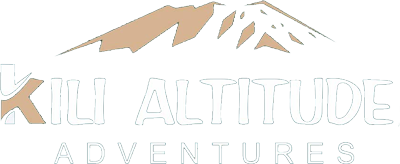Kilimanjaro Northern Circuit Route
The Kilimanjaro Northern Circuit Route is an unforgettable experience. This relatively new route ascends the more scenic and tranquil western slope of Kilimanjaro and crosses nearly the entire mountain before the summit. This is easily one of the most picturesque paths and peaceful journeys up Africa’s highest point, as there are almost no other groups on the northern face.
Northern Circuit Route has the highest Kilimanjaro Success Rate which is 98% and approaches from south of Kilimanjaro
The Northern Circuit route is one of the best routes on Kilimanjaro, offering nearly 360 degrees of beautiful scenery including the quiet, rarely visited northern slopes. As the longest route on Kilimanjaro, the Northern Circuit also has the most acclimatization time and the highest summit success rate. Thus, the Northern Circuit route is highly recommended.
The route approaches Mount Kilimanjaro from the west, beginning with a long drive from Moshi to Londorossi Gate. From there, the first two days are spent trekking through the rainforest to Shira Ridge, before crossing the Shira Plateau. The route then heads north and circles clockwise from Moir Hut to Buffalo Camp to School Hut, before summiting from the east. Descend is made via the Mweka route.
10 – Days Tour to Northern Circuit Route
Day 1 | Arrival
Arrive at Kilimanjaro International Airport (JRO), where you will meet our representative, and transfer to the hotel under the rate. The hotel will provide all the essentials for a comfortable stay: cozy rooms, hot water, polite staff, a swimming pool, and Internet access. In the evening there will be a briefing with our managers, who will also make sure you are ready to begin the climb.
Note: Check-in starts at 2:00 PM.
Day 2 | High-Altitude Drop Off Destination And Trekking To Shira 1 Camp
A guide and a mountain support crew will arrive at the hotel in the morning in order to meet you and hold another briefing, after which you will travel by vehicle (roughly 3–4 hours) to Kilimanjaro National Park’s western entrance: Londorossi Gate (2,200 m). After the quick formality of acquiring climbing permits and registering with the search and rescue service, the group continues upwards towards their drop-off point by off-road vehicles (reaching 3,500 meters). Here you can see stunning views of the Shira Plateau for the first time.
The route from your drop-off point to your first high-altitude camp Shira 1 features a small gain in altitude and is not too physically challenging. Due to this, you will be able to properly begin the process of acclimatization. By the time you reach the camp, our professional mountain crew will prepare everything necessary, put tents, and cook dinner for you.
This will be your first day at this altitude, so it is strongly recommended you heed the following instructions from this point on:
Abstain from consuming alcohol and caffeine
Drink over 4 liters of bottled water daily (little by little, frequently)
Take a Diamox pill to help alleviate symptoms of altitude sickness. Most mountain climbers take Diamox in the morning, before they start their ascent, in order to reduce discomfort associated with altitude sickness. We recommend you consult your doctor prior to the trip in case of potential allergies.
At night you may experience discomfort associated with acclimatization to the high altitude: because of a reduction in your waking breathing pattern, your body gets less oxygen than during the day. Taking altitude into account, you may therefore start feeling sick and have a headache. Pay attention to your own body and tell your guide if you start feeling any symptoms of altitude sickness.
Day 3 | Shira 1 to Shira 2 Trek
This day brings yet another modest altitude gain of 300 m on the way from Shira 1 to Shira 2 Camp. The low physical demands of the trek will leave you with both time and energy to enjoy Kilimanjaro’s flora and- when the weather is favorable- Mount Meru, which is the 5th-highest mountain on the continent.
A further acclimatization walk towards Lava Tower will follow lunch and a 2-hour rest period. This allows you to experience a further gain of 300 m.
Acclimatization hike:
Change in Elevation: Shira 2 Camp (3,900 m) — Destination point en route to Lava Tower (4,110 m)
Hiking distance: 2 km
Hiking time: 1–2 hours
Day 4 | Shira 2 to Moir Hut via Lava Tower Trek
The group leaves the altitude of 3,900 m at Shira Camp and heads towards Lava Tower’s 4,630 m after breakfast. This part of the route is rife with ups and downs and may bring some discomfort. You will need to spend one or two hours at a higher altitude in order to properly acclimatize yourself, so the lunch break will take place at Lava Tower itself.
The afternoon part of the route climbs slightly before descending to Moir Hut Camp. Your guide may decide to bypass Lava Tower altogether, taking the porter trail instead, if any of the members of the group do not appear to have acclimatized properly. In this case, the highest altitude reached will be 4,400, rather than 4,630 meters.
Day 5 | Trekking from Moir Hut to Buffalo Camp
On this day you will have a rather long but at the same time easy trek. After a short steep climb out of Moir Valley, you will start going around the northern slope of Kilimanjaro, and just like on the way to Lava Tower the path will be full of highs and lows, without any steep gains in altitude. This route passes close to the border with Kenya, so you will be treated to amazing views of the Tsavo and Amboseli Valleys.
Day 6 | Trekking from Buffalo Camp to 3rd Cave Camp
You will finish trekking up the northern slope of Kilimanjaro and stop for the night in 3rd Cave Camp, where the route will meet up with the traditional Rongai route. On this day the trekking will be shorter than on the day before, and by this time your body will already have become completely acclimated to an altitude of 4,000 meters, which will contribute to your general feelings of well-being.
Day 7 | Trekking from 3rd Cave Camp to School Hut
On this day you will be trekking to the School Hut Summit Camp (4,750 m). The actual trekking is not very hard, so remember to just choose an appropriate pace in order to keep your strength up for the trekking to Kilimanjaro’s summit. When you reach the camp, we recommend you sleep well, avoid strenuous activity, and drink as much fluids as you can, because that very night you will complete the trekking to Uhuru Peak (5,895 m).
Day 8 | Ascent to Uhuru Peak and Descent to Millennium Camp
Safety being the primary consideration during any summiting attempt, one guide will be nominated per every two climbers. His main responsibility is monitoring his designated clients’ health on the trek to Uhuru Peak’s 5,895 m. The climb, which starts at School Hut’s 4,750 m around midnight, though relatively easy technically, poses a challenge due to the high altitude. A walk upon the nearest glacier is an option upon successful summiting.
The group then descends to Barafu Camp for a two-hour lunch and rest break. The day ends at Millennium Camp’s 3,820 m.
Please keep in mind, that 9/10 accidents occur during descent. Mind your step to avoid potential falls, breaks, and damaged toes.
Day 9 | Return to Mweka Gate from Millennium Camp
Millennium Camp sits amidst a tropical rainforest. The lower altitude and feelings of accomplishment from having reached the summit make for a good night’s rest there. Hot breakfast is followed by your final descent to the Park’s exit gate- Mweka, at 1,650 m. This final stop before your transfer to our offices to receive your accomplishment certificates presents a good opportunity to recap the adventure with your support team. Finally, you will be driven to your hotel for a well-deserved rest.
Day 10 | Departure
Rest in the hotel and transfer to the airport.
Note: Hotel check-out is at 11:00 AM. In case you need a late check-out because of an evening flight, there is the option to extend your hotel stay for an extra fee.
Price Inclusive
- All accommodations per itinerary
- All meals per itinerary (B=Breakfast, L=Lunch, D=Dinner)
- All tours and entrance fees per itinerary (unless listed as excluded)
- All transportation and transfers per itinerary
- 2 nights 3-star hotel in Moshi (upgrades available)
- Round-trip Kilimanjaro Airport transfers (shared)
- National Park gate fees
- Transport from Moshi to trail head and return to Moshi
- Camping fees
- Certified, experienced, English-speaking guides for all routes
- Salaries for all crew members
- Rescue fees (as required by the national park)
- Tents, foam sleeping pads, cooking equipment, and eating utensils
- Oximeters
- Emergency Oxygen (2L canister)
Price Exclusive
- International and domestic flights
- Meals not listed
- Beverages and alcohol
- Tips for guides, drivers, hotel staff
- Optional tours
- Single room supplement
- Personal expenses (visas, airport taxes, Internet, etc.)
- Tips for guides, porters, and cooks (budget $450-650/person)
- Sleeping bags and personal gear
- $50 for a single tent
- Low season discount in April/May

